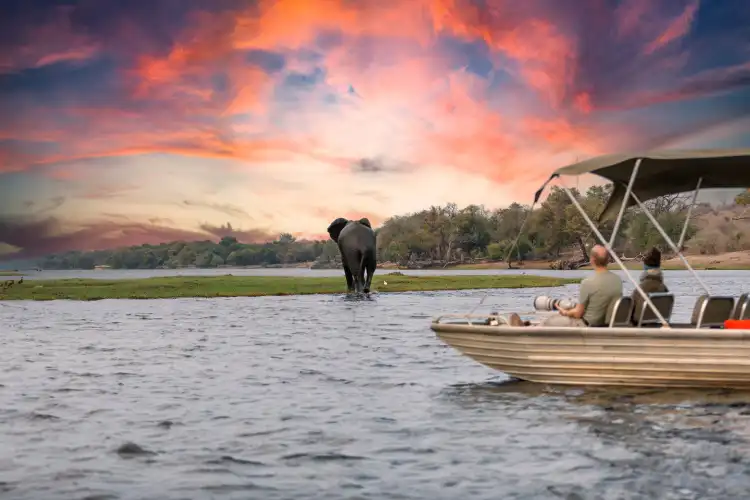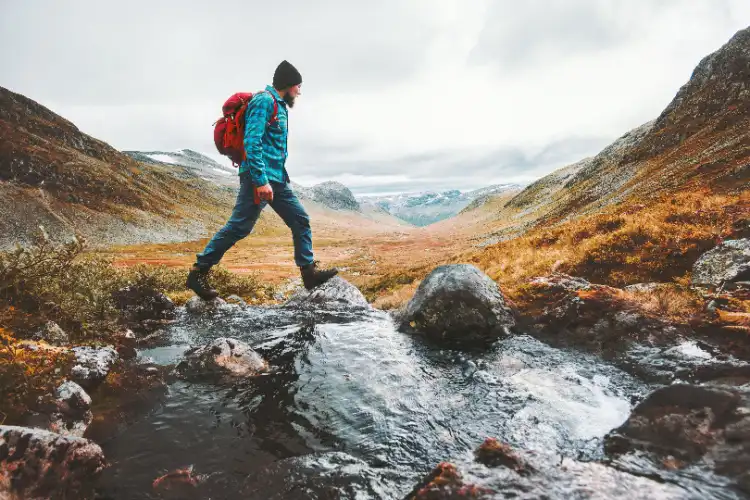
From Sweden to Botswana, these destinations are setting the standard for environmentally and socially responsible travel
By
The global tourism industry has long been a double-edged sword. While it can be a boon to national economies, communities in tourism hotspots often miss out on the benefits – and development frequently comes at the cost of environmental degradation. In the Americas – with the notable exception of Costa Rica – many countries are not doing enough to ensure that tourism protects key areas of biodiversity, and the number of endangered species continues to grow.
Meanwhile in Europe, which leads the world in environmental sustainability and nature preservation efforts, wages in the travel sector are below national averages. At the same time, overcrowding, seasonal peaks and the rise of holiday rentals are driving up costs in many popular destinations, resulting in growing local backlashes against visitors.
No country is perfect but, in many parts of the world, there is a rising demand for – and supply of – more sustainable forms of tourism. Using data from the Travel & Tourism Development Index, this Geo-Graphic highlights the countries where tourism is having the least environmental impact, and offering the greatest benefit to local communities and economies.

 1. Sweden
1. Sweden
Sweden tops the list thanks to its strong environmental regulations and widespread commitment to nature preservation. Despite growing pressures on Sámi communities caused by disruption to their nomadic lifestyle from economic development in the north of the country , Sweden’s approach to sustainable infrastructure and low emissions makes it a global leader in green tourism.
 2. Botswana
2. Botswana
Ranked highest in Africa, Botswana has long prioritised low-impact, high-value tourism – especially in the Okavango Delta. Its conservation-led model protects biodiversity while channelling revenue into local communities.
 3. Kenya
3. Kenya
Tourism in Kenya has traditionally centred on wildlife safaris, but a growing number of community-managed conservancies – such as those led by the Maasai – are reshaping the sector, ensuring benefits go directly to Indigenous landowners.
 4. Australia
4. Australia
Australia’s tourism industry is bolstered by protected landscapes and a strong eco-tourism sector, particularly around its coasts and outback regions. Sustainability is supported by policies that balance visitor access with conservation.
 5. Romania
5. Romania
With large tracts of old-growth forest and some of Europe’s richest biodiversity, Romania’s lower tourism volumes and increasing conservation efforts contribute to its strong sustainability score.
 6. Brazil
6. Brazil
Despite significant threats to Indigenous communities in the Amazon, Brazil ranks well due to its expansive protected areas and the economic impact of nature-based tourism. The challenge remains to align policy with practice on the ground.
 7. Bulgaria
7. Bulgaria
Bulgaria combines lower-cost travel with access to national parks, mountain areas and heritage sites. Its relative affordability and focus on regional development support more inclusive and sustainable tourism.
 8. Switzerland
8. Switzerland
Switzerland has the second-lowest tourism-related greenhouse gas emissions globally. This is thanks to its excellent public transport system, high environmental standards and a strong tradition of alpine conservation.
 9. Chile
9. Chile
Chile’s impressive 37 per cent of land under protection gives it an edge in sustainable tourism. From the Atacama Desert to Patagonia, it attracts nature tourists while preserving its dramatic landscapes.
 10. Paraguay
10. Paraguay
A remarkable 89 per cent of tourism jobs in Paraguay are high-wage, making it a standout for equitable economic impact. Though less well-known as a tourist destination, the country’s focus on labour quality helps it punch above its weight.
Who benefits?
Images of Indigenous people are frequently used to promote tourism in countries where they have historically faced persecution. The countries in this ranking – from Sweden, where traditional Sámi reindeer herding is threatened by green land grabs, to Brazil, where mining and cattle ranching are violently displacing Amazonian tribes – are no exception.
But there are signs of change. In some places, Indigenous-led tourism is growing. In Kenya, for instance, while the profits from wildlife safaris have historically bypassed the local Maasai tribes, initiatives such as the Nashulai Maasai Conservancy in the Maasai Mara represent a more equitable model. Community-owned and managed, they ensure that tourism benefits the original landowners.
Behind the scenes
The Travel & Tourism Development Index calculates each country’s environmental sustainability score based on a range of factors – including tourism’s contribution to national greenhouse gas (GHG) emissions, water stress, pollution, and national protections for nature.
Socio-economic impact scores are derived from tourism’s contribution to GDP, employment, high-wage jobs and labour gender parity. Since 2019, global progress in areas such as sustainable energy use and the sector’s contribution to high-wage employment has led to an overall improvement in scores across many countries.
Bottom of the pack

Despite improvements, major challenges remain – particularly in low- and middle-income countries across Asia, the Middle East and North Africa. In these regions, tourism typically generates fewer high-wage jobs, and issues such as a lack of workers’ rights and gender inequality remain widespread.
At the very bottom of the rankings – with the lowest scores for both environmental sustainability and economic benefit – are:
- Saudi Arabia
- Vietnam
- The United Arab Emirates
- Morocco
- Egypt




